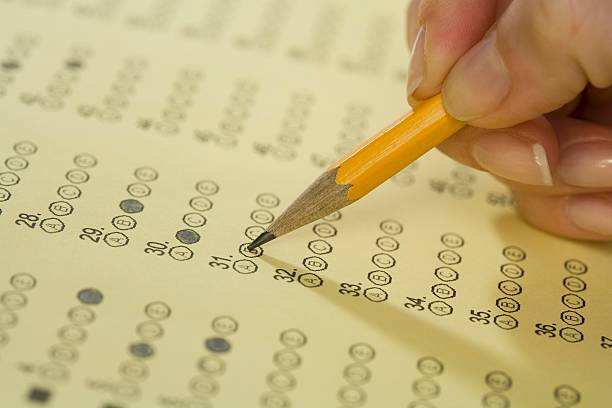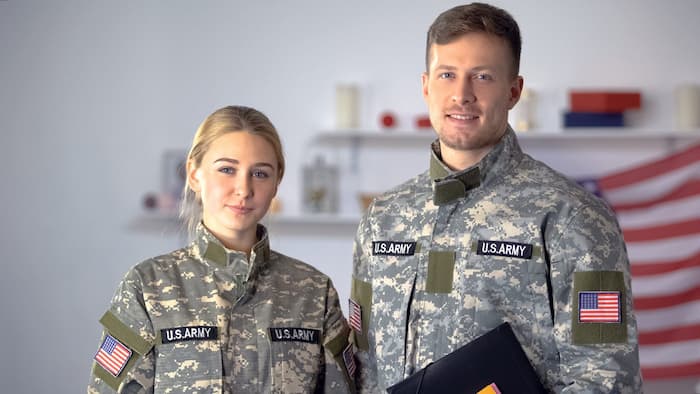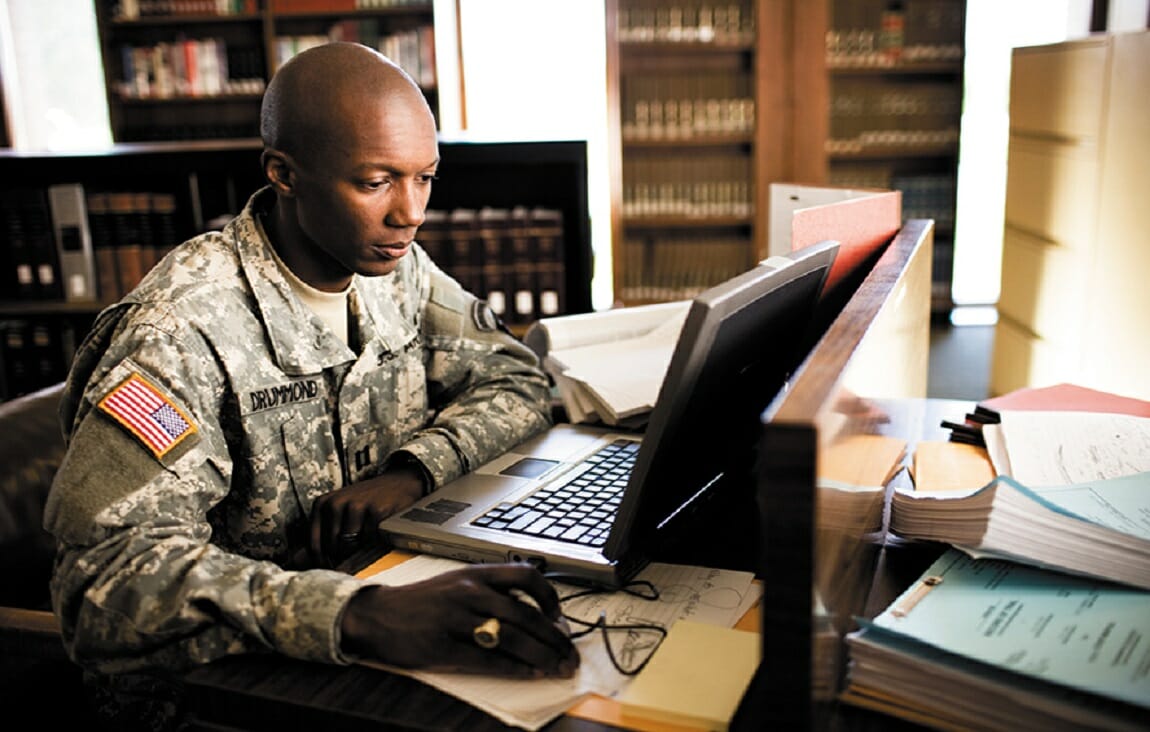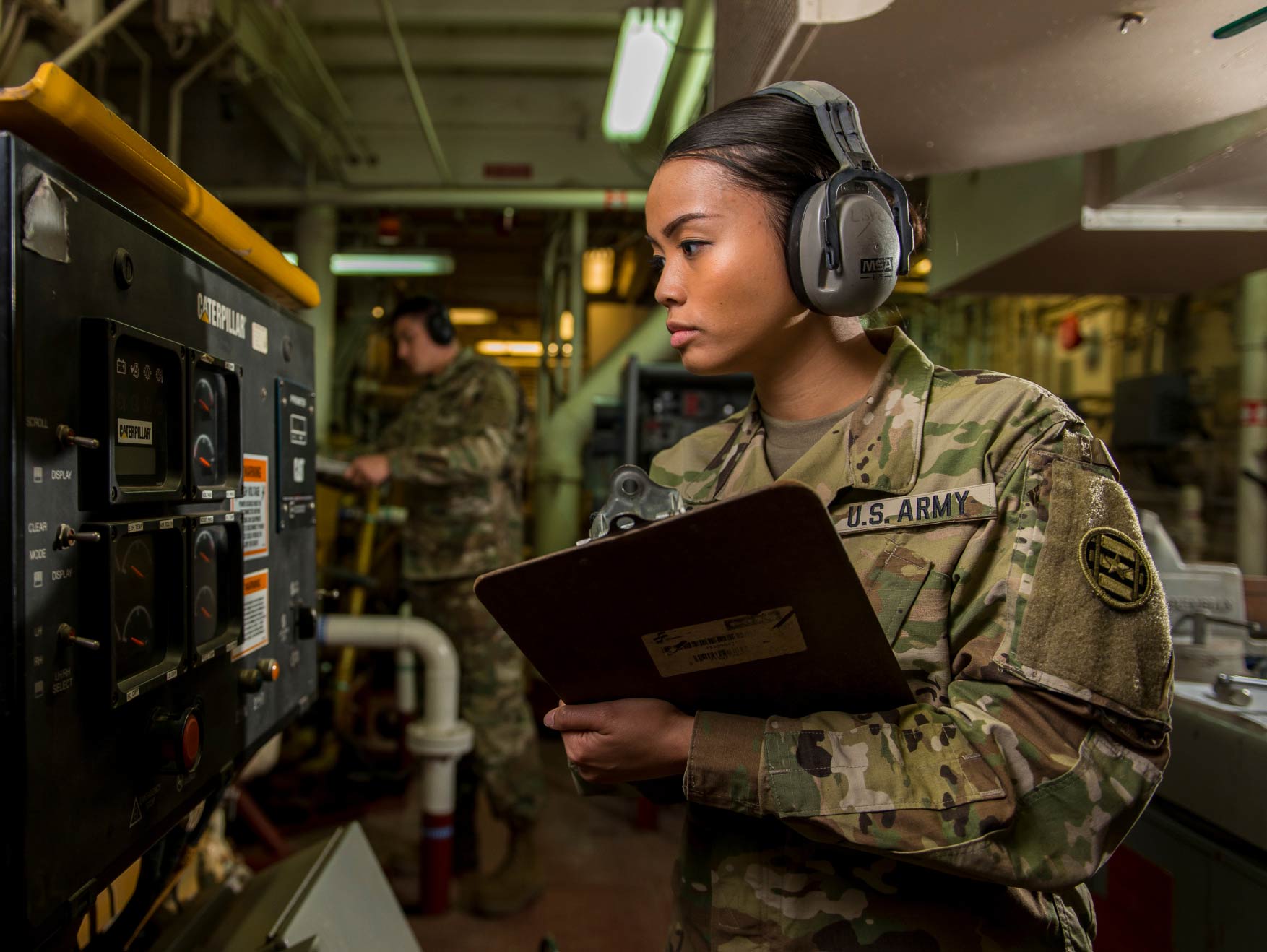You are going to take the ASVAB test to enlist in the US military, and the CAT-ASVAB frequently pops up as you research this test. However, you might have been confused among many different documents but none of them provides you an exhaustive picture about the CAT-ASVAB. Do not worry as now you come into right place. “What exactly is the CAT-ASVAB?” – keep reading and your question will be tackled.
What is the CAT-ASVAB?
CAT-ASVAB (stands for Computer Adaptive Test Armed Services Vocational Aptitude Battery) is a computer-based version of the ASVAB test, besides the traditional one – P&P ASVAB. As its name refers to, CAT-ASVAB is an adaptive and automated test that allows the applicants to take it at their own pace and ability. Specifically, the CAT-ASVAB has several below features:
- Display questions
- Score & record answer
- Score ASVAB subtest
- Compute AFQT and composite scores for all the Services
- Log the result and send it to the Manpower Information and Retrieval System
- Allows for flexible start times and self-paced responding.

CAT-ASVAB vs P&P-ASVAB: What is the difference?
This is by far the most common concern among the ASVAB applicants. In fact, there are some striking differences between the CAT-ASVAB test and the P&P one. However, it is worth noting that these disparities do not influence the examinee’s performance or their result as well.

Test duration
When considering the test duration, the CAT-ASVAB has a longer time limit (198 minutes) in comparison with the P&P version which only lasts 149 minutes. What gives rise to this disparity is that each subtest in these two tests has a different number of questions and time restrictions as well. For instance, while the Paragraph Comprehension in the computer-based ASVAB has a total of 11 questions in 22 minutes, that in the paper has 15 questions and must be done in 13 minutes.
Level of difficulty
Regarding the test’s level of difficulty, there is also a slight difference between these two versions. Since CAT-ASVAB is an adaptive test that will automatically adjust questions to match the examinees’ ability, the difficulty of questions will virtually depend on test-takers’ responses. The P&P ASVAB; on the other hand, maintains consistent in question difficulty. It means that questions in this version will be mixed among easy and hard ones, and chiefly remain at average level to ensure the equivalent with the CAT version.
Location
Another difference between the CAT-ASVAB and the P&P ASVAB is that while the former is only conducted at MEPS, the latter is available at some METS and high-schools (through Career Exploration Program). However, due to CAT’s convenience, more METs are changing towards utilizing the computer-based version.
Test Mechanism
When it comes to the test-taking process, while the P&P ASVAB allows the examinees to review their answer again, it can not be done in the CAT-ASVAB test. Nevertheless, in the P&P ASVAB version, examiners also can not go back to the previous subtest to change their answer once it has been done. Therefore, it is beneficial for examiners in both two forms of test to carefully opt out their answer while taking the test.
CAT-ASVAB: Structure and Content
The CAT-ASVAB test has 9 subtests covering 4 domains: Verbal, Math, Science, Technical and Spatial. Unlike the P&P ASVAB in which 9 subtests are included, this computer-based level has 10 subtests due to the separation of Auto and Shop Information into two subtests in the CAT version:
- Arithmetic Reasoning: 39 minutes and 16 questions
- Assembling Objects: 15 minutes and 16 questions
- Auto and Shop Information: 7 minutes to answer 11 auto-related questions and 6 minutes to complete 11 shop-related questions
- Electronics Information: 8 minutes and 16 questions
- General Science: 8 minutes and 16 questions
- Mathematics Knowledge: 16 minutes and 20 questions
- Mechanical Comprehension: 20 minutes and 16 questions
- Paragraph Comprehension: 11 minutes and 22 questions
- Word Knowledge: 8 minutes and 16 questions

CAT- ASVAB: The pros & cons
Although CAT-ASVAB seems to be the optimal version of the ASVAB test with multiple advanced features, it is unavoidable that there are still weaknesses. Now let’s see what it can bring about and what it might cause.

Pros
Since the CAT-ASVAB test is conducted and managed completely on the computer, it is easily seen that the accuracy will be almost at a maximized level. Also, its security is also guaranteed. Below are some most outstanding traits of the CAT-ASVAB.
- Immediate scoring
- Reduced scoring errors
- Standardized instructions and procedures
- Increased score accuracy
- Increased test security
Cons
As mentioned above, weaknesses are unavoidable. The only one and biggest disadvantage of taking the CAT-ASVAB test is that applicants can not change their answer once they have gone through it. It means that you have to think truly thoroughly before choosing the answer as later you will have no chance to fix it anymore.
CAT-ASVAB: Scoring and Interpretation
The ASVAB test result is often used to determine military enlistment eligibility and to help students in high-school explore their suitable career. Regarding the CAT-ASVAB, the score is virtually used to decide whether one is eligible for military recruitment. Specifically, CAT-ASVAB score is calculated using a mechanism considering the difficulty of the questions and the correctness of the answer.
Standard Scores
Standard Scores is basically the scores counted on each ASVAB subtest that has a total 10 sections. These Scores indicate your performance on each section when comparing with a relevant group, and used as a standard result to evaluate candidates.
Line Score/Composite Score
Another term coined is Line Score (or Composite score) which is used to classify military jobs best suited for examiners. It is computed according to the combination of subtests that are needed for certain military jobs to ensure the applicant’s good performance. To opt for suitable candidates, each branch of military occupations has a different Line Score based on subtests combination. For example, the Line Score of Mechanical Maintenance is counted by the sum of three subtests: Auto and Shop Information, Electronics Information, and Mechanical Comprehension.
AFQT Score
An example of Line Score is the AFQT score that might be the most important score of the ASVAB test. AFQT is computed using the Standard Scores from four subtests: Arithmetic Reasoning (AR), Mathematics Knowledge (MK), Paragraph Comprehension (PC), and Word Knowledge (WK). AFQT score percentile range from 1 to 99 that indicates how examinees’ scores compare to others in the same grade and of the same or opposite gender. For example, a score of 50 indicates that the examinee scored as well as or better than 50% of the people of the same certain background information. The highest the ASVAB score you get on the AFQT, the more attractive the jobs you will be offered.
FAQs
1. Where to take the CAT-ASVAB?
Ordinarily, you can only take the CAT-ASVAB at MEPS as only MEPS conducts CAT-ASVAB. However, now you can also take the CAT at some MET sites as more and more MET are applying the computer-based version due to its advantages.
2. How many questions are on the CAT-ASVAB?
There are a total 135 questions in the CAT-ASVAB divided into 10 subtests that are mentioned above.
3. How to read the CAT-ASVAB test score report?
Before being able to read the CAT-ASVAB test score report, you have to understand different types of score of the ASVAB test like Standard Score, Line Score/Composite Score, and most important one AFQT Score. So basically, the CAT-ASVAB test score report will contain those three main scores that each of them indicates a different meaning:
- Standard Score: score on each subtest
- Line Score/ Composite Score: calculated based on combination of subtests and assist to classify military occupations best suited for candidates
- AFQT Score: computed based on score from 4 subtests: Arithmetic Reasoning (AR), Mathematics Knowledge (MK), Paragraph Comprehension (PC), and Word Knowledge (WK). This score will be used to determine candidate’s eligibility for enlistment
4. Is the CAT-ASVAB easier?
It is commonly assumed that the CAT-ASVAB is easier when compared with the paper one since it is an adaptive test where the question will be adjusted to test-takers’ answers. However, this is not true as in the CAT-ASVAB test, the question can be harder if you answer the previous correctly; and vice versa. On the other hand, on the P&P ASVAB test, the level of difficulty is consistent throughout the test, and that there will be both easy questions and difficult ones.
Conclusion
This blog post presented detailed information about the CAT-ASVAB, and cleared up related queries in the FAQs. In general, the CAT-ASVAB is virtually the same as the P&P version in that their differences do not affect the performance as well as the result of candidates. Hope this post solves your concerns; otherwise, you can leave other questions below for general discussion.




